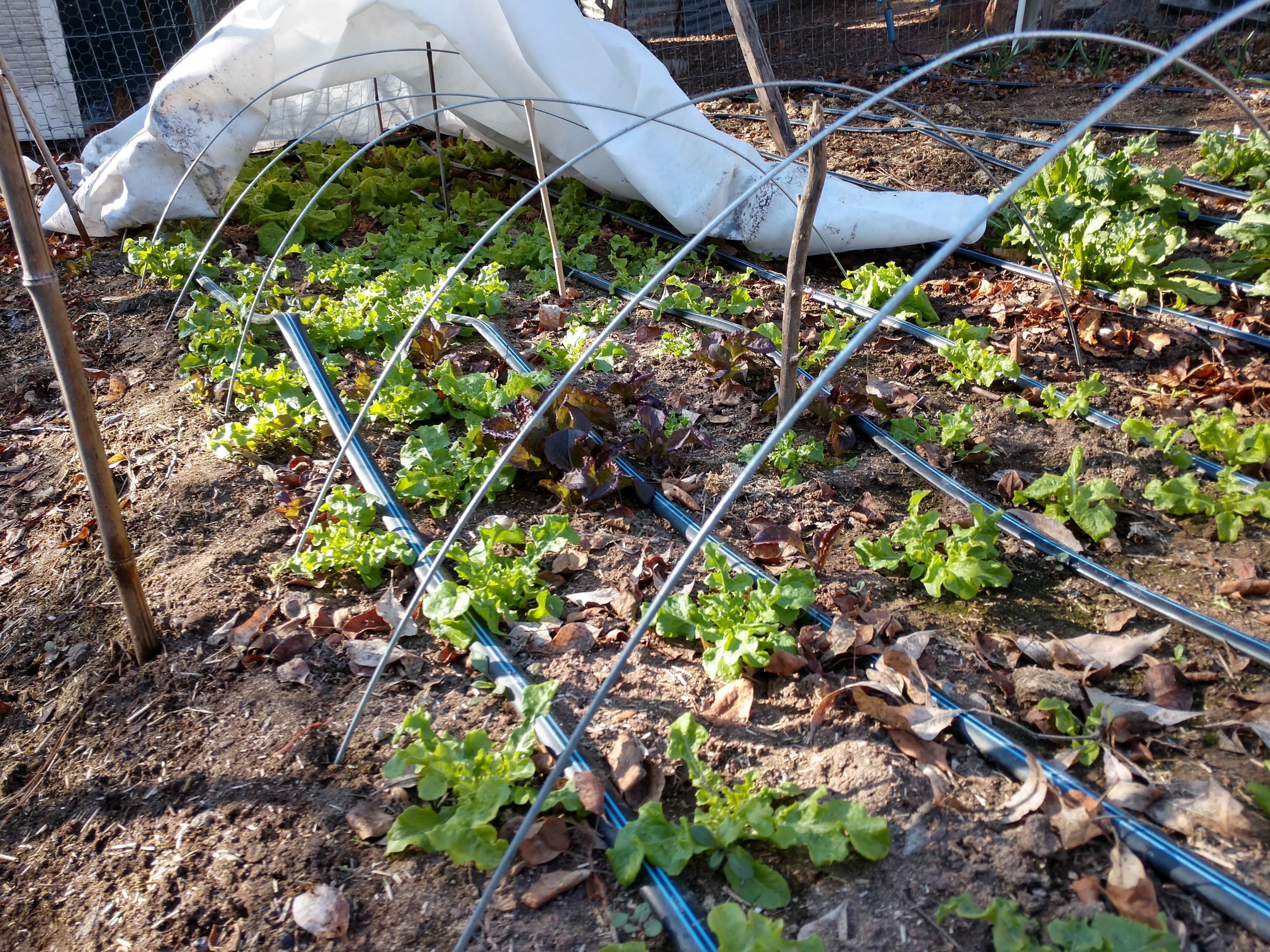 Social Distancing? Start a Garden! - March 25, 2020 Jeff Schalau, Agent, Agriculture & Natural Resources University of Arizona Cooperative Extension, Yavapai County Social distancing is the new term we’ve all added to our vocabularies over the last weeks. Many people are at home minimizing contact with others as the COVID-19 pandemic is keeping us out of circulation. I’m currently working from home too. Many housebound people are using this down-time to learn new skills (writing, music, meditation, etc.). I would like to also recommend gardening as way to spend your time productively. Home vegetable gardening is also a way to enhance your supply of fresh, nutritious food and you don’t need to brave the crowds or stand in line to do it. The best vegetable gardening sites are in full sun. However, many crops will produce adequately on 6 to 8 hours of full sun per day. Root and leafy crops (carrots, turnips, beets, leaf lettuce, chard, etc.) can tolerate a little bit more shade than this. Be mindful that shadows will change over the course of the year with the angle of the sun. Avoid planting vegetables on the north sides of buildings or near trees where the tree’s roots will invade the garden soil. If weeds are present, then get after them as soon as you can. Prevent annual weeds from going to seed by pulling or hoeing them out prior to flowering. Perennial weeds like bermudagrass are more labor intensive and take a longer period to control. Sites with established perennial weeds are the most challenging. Here you may consider applying herbicides or using weed barrier and creating raised beds. A reliable source of irrigation water is critical to successful vegetable gardening in Arizona. Many Verde Valley properties are irrigated using ditch-delivered water. Non-ditch served properties may require installation of water lines. To prevent frozen/broken lines, you must bury your pressurized water main at least 18 inches. You should always install a backflow preventer to avoid potable water contamination. For year round use, consider installing a freeze-proof yard hydrant in or near your garden location. Fencing is another consideration. If you are out on the edge of town where wildlife is present, then you must determine which wildlife species you will be trying to exclude. Deer, rabbits, squirrels, gophers, woodrats, and javelinas are our most common garden nuisance species. For rabbits and javelina, a sturdy four-foot-tall fence of chain link or woven wire with 2 feet poultry wire along the base is adequate. For gophers, you may consider creating an underground barrier of hardware cloth. This should be at least 2 feet deep. Squirrels and woodrats can climb as well as dig and may require complete enclosure with poultry wire. Small enough poultry wire to exclude the rodents and big enough for bees, other pollinators, and beneficial predator insects. A composting area is another good idea when vegetable gardening. It seems there is never enough compost for the garden and it reduces waste going to our landfills. Many gardeners prefer compost bins to a simple heap. Bins can be constructed out if concrete block, sheet metal, recycled pallets, or other materials. The compost area should be near your garden. Composting is an art that you learn over time given the raw materials you have available to you. I have written about composting in many previous Backyard Gardener columns (available on-line at cals.arizona.edu/yavapai/anr/hort/byg). Avoid areas with extremely rocky or compacted soils. In these situations, consider using raised beds filled with imported top soil – real soil rather than bagged, soilless media. Raised beds can be made of various materials depending on your budget and what you have available. Many gardeners like concrete block walls or corrugated metal sides for raised beds. Rot resistant wood, such as redwood, can also be used. Most home gardeners avoid CCA (chromated copper arsenate) treated lumber or creosote coated railroad ties around edible crops. Starting a vegetable garden from scratch sounds like a lot of work – and it is. However, when the above factors are considered, you will have a convenient, functional vegetable garden space that will serve you for a long time. Meanwhile, stay safe and practice social distancing and other recommended practices to avoid spreading COVID-19. Also, be creative and productive if you are at home with time to spare. In addition, be safe so we don’t unnecessarily burden our already busy health care providers. Wash your hands often and follow CDC recommended practices. See below for links to additional vegetable gardening information. You can follow the Backyard Gardener on Twitter – use the link on the BYG website. If you have other gardening questions, call or email the Master Gardener help line in the Prescott (928-445-6590/prescottmg@gmail.com) or Camp Verde (928-554-8992/verdevalleymg@gmail.com) and be sure to include your name, address and phone number. Find past Backyard Gardener columns or provide feedback at the Backyard Gardener web site: http://cals.arizona.edu/yavapai/anr/hort/byg/.  Several lettuce varieties growing under a low tunnel in early March 2020 (Photo by Jeff Schalau, University of Arizona).
Several lettuce varieties growing under a low tunnel in early March 2020 (Photo by Jeff Schalau, University of Arizona).Additional Resources Ten Steps to a Successful Vegetable Garden, USDA Forest Service extension.arizona.edu/sites/extension.arizona.edu/files/pubs/az1435-2015.pdf Consider Composting, University of Arizona Backyard Gardener cals.arizona.edu/yavapai/anr/hort/byg/archive/considercomposting.html Fencing Your Garden, University of Arizona Backyard Gardener cals.arizona.edu/yavapai/anr/hort/byg/archive/buildingfences2016.html Soil Tips for Raised Beds, University of Arizona Backyard Gardener cals.arizona.edu/yavapai/anr/hort/byg/archive/soilforraisedbeds.html |